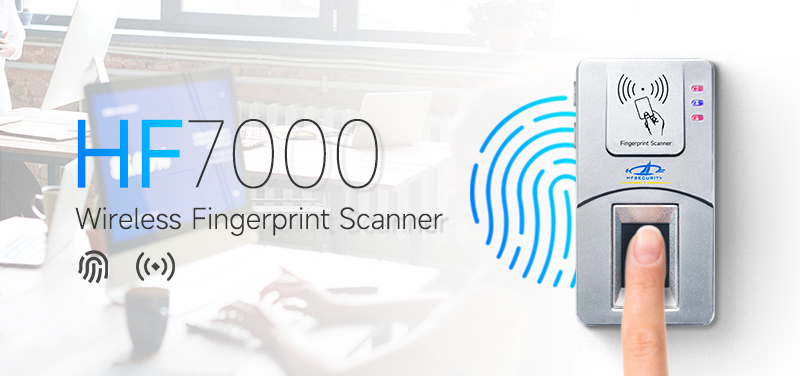يمكن أن توفر حلول إدارة الشاي باستخدام التكنولوجيا الحيوية مجموعة من الفوائد، بما في ذلك تحسين الكفاءة، وتعزيز الأمن، وإدارة الموارد بشكل أفضل.
نبذة عن مزارعي الشاي في كينيا
تعد كينيا واحدة من أكبر الدول المنتجة والمصدرة للشاي في العالم، وتشكل زراعة الشاي جزءًا حيويًا من اقتصاد البلاد. تتم زراعة الشاي في كينيا بشكل أساسي من قبل مزارعين صغار يزرعون الشاي على قطع صغيرة من الأرض يبلغ متوسط مساحتها حوالي نصف فدان.

يتم تنظيم مزارعي الشاي الكينيين في تعاونيات أو جمعيات توفر لهم خدمات أساسية مثل التدريب وخدمات الإرشاد وتسويق الشاي. تساعد هذه التعاونيات في تمكين المزارعين الصغار، ومنحهم القدرة على الوصول إلى الأسواق والخدمات المالية والدعم الفني.
تُعَد زراعة الشاي مصدر رزق لملايين الكينيين، كما أنها توفر فرص عمل مباشرة وغير مباشرة للعديد من الناس. وتساهم صناعة الشاي بشكل كبير في الناتج المحلي الإجمالي لكينيا، حيث تدر على البلاد مليارات الدولارات من النقد الأجنبي من صادرات الشاي.
ومع ذلك، فإن زراعة الشاي في كينيا ليست خالية من التحديات. إذ تعتمد الصناعة بشكل كبير على الظروف الجوية، ويمكن أن يكون للتغيرات في أنماط الطقس تأثيرات كبيرة على إنتاج الشاي. كما يواجه القطاع منافسة من البلدان الأخرى المنتجة للشاي، وهو ما قد يؤثر على الطلب على الشاي الكيني وسعره.
بالإضافة إلى ذلك، يعاني بعض مزارعي الشاي في كينيا من انخفاض الغلة ورداءة جودة الشاي، وهو ما يمكن أن يعزى إلى عوامل مثل ممارسات الزراعة غير الكافية، والمدخلات غير الكافية، وطرق المعالجة القديمة.
ولمعالجة بعض هذه التحديات، نفذت الحكومة الكينية وأصحاب المصلحة الآخرون مبادرات مختلفة لدعم مزارعي الشاي، بما في ذلك توفير فرص الحصول على الائتمان والدعم الفني، وتحسين البنية الأساسية، وتعزيز القيمة المضافة لزيادة قيمة الشاي الكيني.
ما هي عملية استخدام التكنولوجيا الحيوية لإدارة مصانع الشاي
يمكن استخدام تقنية القياسات الحيوية لإدارة مصانع الشاي من خلال توفير طريقة آمنة ودقيقة لتحديد وإدارة القوى العاملة. فيما يلي الخطوات العامة المتبعة في استخدام تقنية القياسات الحيوية لإدارة مصانع الشاي:

التسجيل:
يتم تسجيل البيانات الحيوية لكل عامل، بما في ذلك بصمات الأصابع، أو التعرف على الوجه، أو مسح القزحية، أثناء عملية التسجيل. ثم يتم تخزين هذه البيانات في قاعدة بيانات آمنة.
التحقق من الهوية:
يُطلب من العمال مسح بياناتهم الحيوية في كل مرة يدخلون فيها مصنع الشاي أو يخرجون منه. تضمن هذه العملية السماح فقط للعاملين المصرح لهم بالدخول إلى المصنع.
تتبع الحضور والانصراف: يمكن أيضًا استخدام تقنية القياسات الحيوية لتتبع حضور وانصراف العمال. يُطلب من العمال مسح بياناتهم الحيوية عند وصولهم إلى العمل، وأخذ فترات راحة، ومغادرة العمل. يساعد هذا في ضمان حصول العمال على أجور دقيقة مقابل الوقت الذي عملوا فيه.
صلاحية التحكم صلاحية الدخول:
يمكن استخدام تقنية القياسات الحيوية لتقييد الوصول إلى مناطق معينة في مصنع الشاي، مثل مناطق التخزين أو مناطق المعالجة. يُسمح فقط للعاملين المصرح لهم الذين لديهم البيانات الحيوية الصحيحة بالدخول إلى هذه المناطق.
إدارة البيانات:
توفر تقنية القياسات الحيوية طريقة آمنة وموثوقة لإدارة بيانات العمال. ويمكن استخدام البيانات لإنشاء التقارير وتحليل أداء القوى العاملة وضمان الامتثال لقوانين وأنظمة العمل.
إن استخدام تكنولوجيا القياسات الحيوية لإدارة مصانع الشاي يمكن أن يساعد في تحسين الأمن والكفاءة والإنتاجية. كما يمكن أن يساعد في خفض تكاليف العمالة، وتحسين الدقة في إدارة الرواتب، والحد من الأنشطة الاحتيالية. ومع ذلك، من المهم ضمان حماية خصوصية وأمان بيانات العمال وتنفيذ التكنولوجيا بطريقة أخلاقية وشفافة.

وفيما يلي بعض الطرق التي يمكن من خلالها استخدام التكنولوجيا الحيوية في حلول إدارة حدائق الشاي المخصصة:
التعرف على هوية الموظفين وتتبع حضورهم:
التكنولوجيا البيومترية مثل بصمة الإصبع أو التعرف على الوجه يمكن استخدامها لتحديد هوية الموظفين وتتبع حضورهم. ويمكن أن يساعد هذا في منع الاحتيال وضمان معالجة الرواتب بدقة.
إدارة المخزون والموارد:
يمكن استخدام تقنية القياسات الحيوية لتتبع المخزون والموارد مثل الأدوات والمعدات، والتأكد من عدم فقدها أو سرقتها. ويمكن أن يساعد هذا في خفض التكاليف وتحسين الإنتاجية.
حماية:
يمكن استخدام تقنية القياسات الحيوية لتعزيز الأمن من خلال التحكم في الوصول إلى المناطق الحساسة في حديقة الشاي. ويمكن أن يشمل ذلك استخدام التعرف على الوجه أو مسح بصمات الأصابع لمنح حق الوصول إلى المباني أو مناطق التخزين أو المناطق المحظورة الأخرى.
مراقبة الصحة والسلامة:
يمكن استخدام تكنولوجيا القياسات الحيوية لمراقبة صحة وسلامة العمال. على سبيل المثال، يمكن استخدامها للكشف عن علامات التعب أو الإجهاد، أو لمراقبة العلامات الحيوية للعمال للتأكد من عدم تعرضهم لخطر الإجهاد الحراري أو مشاكل صحية أخرى.

إجمالي، التكنولوجيا البيومترية تتمتع هذه الحلول بإمكانية تحسين العديد من جوانب إدارة مزارع الشاي، بدءًا من إدارة الموظفين وتخصيص الموارد وحتى الأمن والسلامة. ويمكن تصميم الحلول المخصصة وفقًا للاحتياجات المحددة لكل مزارع شاي على حدة، مما يوفر أداة قوية لإدارة هذه العمليات المعقدة.
صعوبات الإدارة اليدوية لمزارع الشاي
إن الإدارة اليدوية لمزارع الشاي قد تكون مهمة صعبة بسبب عدة عوامل. وفيما يلي بعض الصعوبات التي قد تنشأ:
العمل الذي يتطلب عمالة كثيفة:
تتطلب مزارع الشاي قدرًا كبيرًا من العمل اليدوي للقيام بأنشطة مثل التقليم والقطف وإزالة الأعشاب الضارة. وقد يكون هذا العمل مرهقًا جسديًا، وقد يكون العثور على عدد كافٍ من العمال المهرة أمرًا صعبًا.
يعتمد على الطقس:
تعتمد مزارع الشاي بشكل كبير على الظروف الجوية. فالأحداث الجوية المتطرفة مثل الجفاف والفيضانات والعواصف يمكن أن تلحق الضرر بالنباتات وتقلل من إنتاجيتها.
مكافحة الآفات والأمراض:
نباتات الشاي معرضة للآفات والأمراض، والتي يمكن أن تنتشر بسرعة وتسبب أضرارًا كبيرة. قد يستغرق التعامل مع الآفات والأمراض يدويًا وقتًا طويلاً ويشكل تحديًا.
إدارة التربة:
تتطلب نباتات الشاي ظروف تربة معينة لتزدهر. قد يكون الحفاظ على خصوبة التربة ومنع تآكلها وإدارة مستويات الحموضة في التربة يدويًا أمرًا صعبًا.
رقابة جودة:
يتطلب الحفاظ على جودة الشاي المتسقة قدرًا كبيرًا من الاهتمام بالتفاصيل، بما في ذلك توقيت الحصاد والمعالجة والتخزين. قد تؤدي الإدارة اليدوية إلى عدم اتساق الجودة بسبب الخطأ البشري.
يكلف:
إن الإدارة اليدوية لمزارع الشاي قد تكون مكلفة، لأنها تتطلب قوة عاملة كبيرة وعمالة مكثفة. وقد يؤدي هذا إلى ارتفاع تكاليف الإنتاج وانخفاض الأرباح.
ما هي مميزات استخدام تقنية القياسات الحيوية لإدارة مصانع الشاي؟
إن استخدام التكنولوجيا الحيوية لإدارة مصانع الشاي يمكن أن يوفر العديد من المزايا، بما في ذلك:
زيادة الأمن:
تستخدم تقنية القياسات الحيوية خصائص فيزيائية فريدة للتحقق من هوية الأفراد، مما يجعل من الصعب على الأفراد غير المصرح لهم الوصول إلى مصنع الشاي أو أنظمته. ويمكن أن يساعد هذا في منع السرقة والاحتيال وغيرها من الخروقات الأمنية.
تحسين كفاءة:
يمكن استخدام تقنية القياسات الحيوية لأتمتة العمليات مثل تتبع الحضور، مما قد يوفر الوقت ويقلل الأخطاء. كما يمكن أن يساعد هذا المديرين على تحديد الاتجاهات في أداء الموظفين واتخاذ الإجراءات التصحيحية عند الضرورة.
دقة أكبر:
يمكن أن توفر تقنية القياسات الحيوية مستوى عاليًا من الدقة عند التحقق من هوية الأفراد، مما يقلل من خطر الأخطاء أو الاحتيال. يمكن أن يكون هذا مفيدًا بشكل خاص في المواقف التي تتطلب مستويات عالية من الأمان، مثل الوصول إلى المناطق المحظورة في مصنع الشاي.
توفير في التكاليف:
من خلال أتمتة بعض العمليات وتقليل الحاجة إلى العمل اليدوي، يمكن أن تساعد تقنية القياسات الحيوية في خفض التكاليف المرتبطة بإدارة مصنع الشاي. ويمكن أن يساعد هذا في تحسين الربحية وجعل مصنع الشاي أكثر قدرة على المنافسة.
تحسين الامتثال:
يمكن أن تساعد تقنية القياسات الحيوية مصانع الشاي على الالتزام باللوائح المتعلقة بالأمن وحماية البيانات. على سبيل المثال، يمكن استخدامها لتقييد الوصول إلى البيانات أو المعدات الحساسة، وضمان قدرة الأفراد المصرح لهم فقط على أداء مهام معينة.
وبشكل عام، فإن استخدام التكنولوجيا الحيوية يمكن أن يساعد في تحسين الأمن والكفاءة والربحية لمصانع الشاي، مع ضمان الامتثال للوائح والمعايير ذات الصلة.
بشكل عام، تتطلب الإدارة اليدوية لمزارع الشاي جهودًا كبيرة وخبرات وموارد. وللتغلب على هذه التحديات، تتجه العديد من مزارع الشاي إلى التكنولوجيا والأتمتة لتحسين الكفاءة والإنتاجية.



